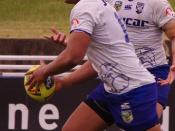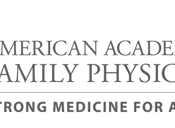The sudden death of an athlete is always a tragic story that is headlines in every newspaper. Athletic field catastrophes strike to the heart of our awareness's and often stimulate us. Without doubt, they raise a number of practical and ethical issues. Athletes have to be in the best shape if they want to compete in their certain sport. How could athletes be in such good shape one moment but dead the next? There are many diseases that could cause these results and might have warning signals to avoid such fate.
Most of the athlete's illnesses have been linked to heart disease (O'Connor, Francis). The most common cardiac illnesses are hypertrophic cardiomyopathy, aortic stenosis, congenital and acquired coronary disease, and myocarditis. The less common incidents have been mitral valve prolapse, Marfan's syndrome, and right ventricular dysplasia. The majority of athletes with these diseases have had them since they were born (Falstti, Herman).
Sudden death can also occur from problems other than cardiac causes. Athletes that get addicted to drugs put themselves at a higher risk for heart related problems. Alcohol, cocaine, steroids, amphetamine, and erythropoietin (EPO) are some causes of non-natural cardiac problems (Falstti, Herman).
Doctors are trying to find a way to detect which athletes are at risk of sudden death. Physical exams and history checks are a good way to identify the athletes who are more prone to cardiac disease. Often these exams are not enough. If you want to play a high school, college, or professional sport, you have to have a physical. There are two steps to the physical; the first step occurs when the athlete fills out a form that has background history about themselves and their family's history. During the second step, the doctor actually checks the athlete's eyes, oral cavity, ears, nose, lungs, abdomen, skin, and blood pressure. Most of the time, these tests are simple, eye-sight, one-time tests that take place when the athlete is relaxed.
Is this physical examination enough or should doctors do a more in-depth analysis? While the American Academy of Family Physicians, American Academy of Pediatrics, American College of Cardiology, American College of Sports Medicine, American Heart Association, American Medical Society for Sports Medicine, American Orthopedic Society for Sports Medicine and American Osteopathic Academy of Sports Medicine have developed and recommended cardiovascular screening for athletes as a sports preparticipation physical evaluation (PPE) (Lyznicki, James), we have avoided making these recommendations a requirement. By doing these further evaluations, it would help the physician's decision about whether or not an athlete is well enough to play in some of the more strenuous sports. One of the problems with further testing is that it would be too costly. Another problem is the athlete's reluctance to accept the results. Sudden death for athletes is rare and usually uncommon. In a study, one in every 280,000 individuals dies each year (Falstti, Herman). These low risk incidents could indicate team doctors and athletic trainers don't have the knowledge to recognize the warning signs. In addition to cost, this would make their jobs twice as difficult and much more time consuming to identify athletes with such rare illnesses.
Overall, sudden deaths in athletes do occur. Taking all the necessary precautions and completing further tests, such as the PPE, might help lower and possibly prevent these sudden deaths from happening. These tests are very important and should be treated with careful consideration. If applying additional physical analysis for the well-being of an athlete means that trainers and doctors need more education to administer in-depth exams, the necessary requirements for such a program should be started immediately.






